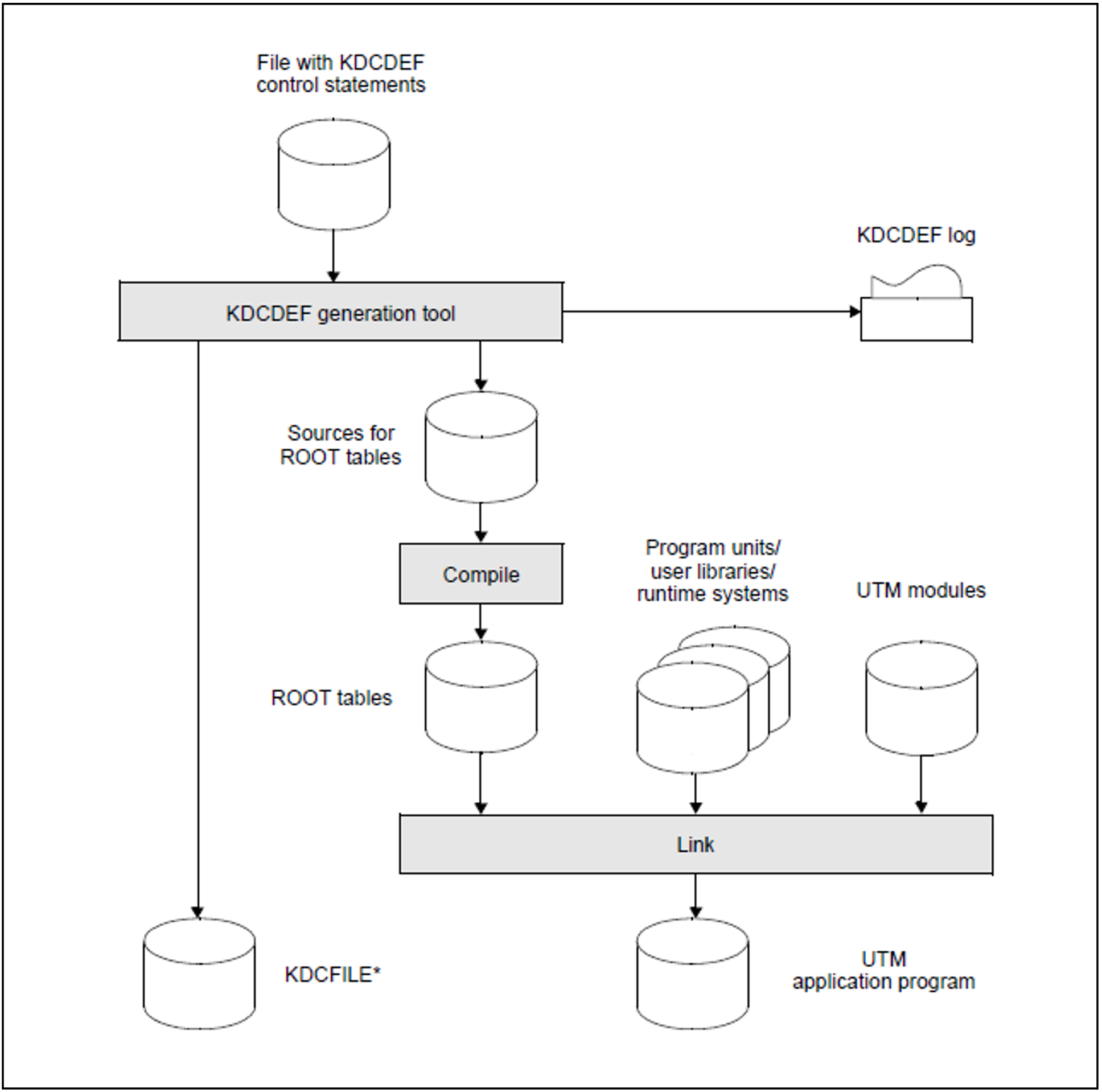Before creating the application program, you must write and compile program units. These program units define the application logic.
The application program is created to ensure that the program units can run under the management of openUTM. This involves the following steps:
compiling the source text for the ROOT tables, which is generated by KDCDEF
linking the compiled ROOT tables, program units, and any other modules (e.g. format libraries, local message modules, or language-specific runtime systems) to the application program together with UTM modules. This can be done statically (i.e. before the application is started) or dynamically (i.e. when the application is started).
The modules required for your application depends on your application architecture and the operating system platform. Detailed information can be found in the corresponding openUTM manual “Using UTM Applications”. |
Main routine KDCROOT
One part of the application program is the main routine KDCROOT. When the application is running, KDCROOT acts as the main control program, and performs the following tasks among others:
establishes the connection between program units and the UTM system functions
coordinates the sequence of program units in different programming languages
interacts with formatting systems (only BS2000 systems )
sets up links with databases and resource managers
Figure 31: Generating a UTM application
*In a UTM cluster application, further files that are global to the cluster are generated in addition to KDCFILE (see "UTM cluster files").

